EDITOR’S NOTE: Mark Alvarez, an immigration attorney who also has written for various publications on many subjects along with radio and television appearances, provides the Spanish translation of this article, as presented below the English language version of this feature.
Perhaps there are no better places than libraries to experience magic—for example, in fairy tales, mythology and fantasy. But, a library’s magic goes broader and deeper. In The Paris Review, Stuart Kells wrote, libraries encompass “the magic of play” and “the magic of serendipity.” He adds, “Libraries have a strange potency that is hard to capture in the arid, bureaucratic calculus of inputs, outputs, and outcomes.”
As last year’s Super Summer Challenge program concluded at the Salt Lake City Public Library (SLCPL), staff members in September already set the stakes for planning this summer’s program. The theme Imagine Your Story! was chosen to capitalize on many dimensions of a library’s magic, as reflected in the specific tracks of activities and benchmarks not only tailored for babies and toddlers, kids and teens but also for adults.
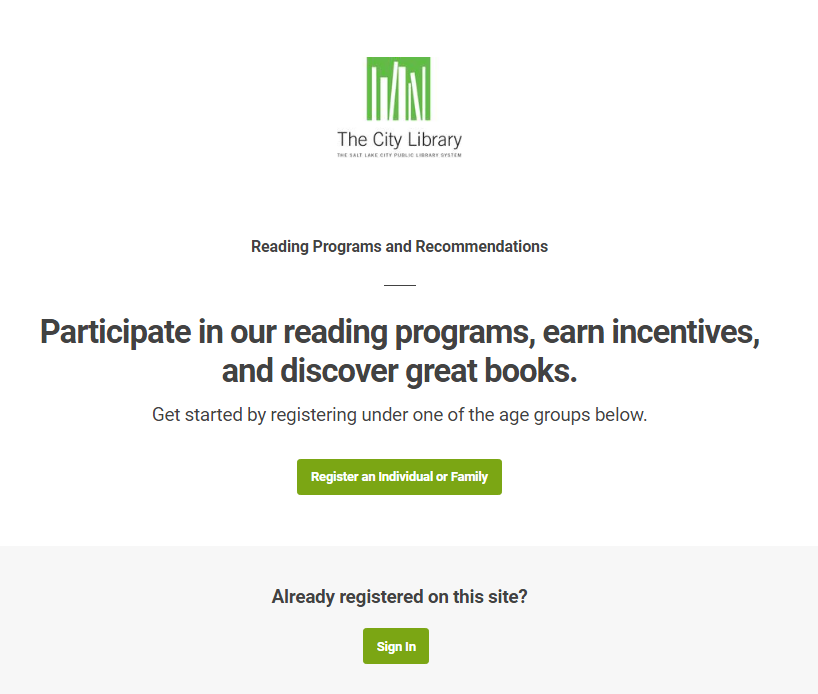
Before the first day of spring this year, virtually every aspect of this year’s Super Summer Challenge program was set, including prizes and incentives connected to local businesses in the Salt Lake City metropolitan area. However, when the library system was shuttered after March 15 because of the COVID-19 pandemic, employees worked quickly to transfer the popular summer offering to a digital platform, finishing well in advance of the forthcoming June 1 launch. “I am proud of how Liesl [Jacobson] and the rest of the team pivoted so quickly in digitizing access to the program,” Peter Bromberg, library’s executive director, says.
“When we set out last fall to plan this year’s event, the thought of the practicalities we would need if we would not be open had not entered our minds,” says Liesl Jacobson, assistant director for community engagement. “It was especially challenging because we know that there are members of our community who might not have easy digital access.”
Indeed, making available resources for everyone to explore the magic of play and imagination digitally while adhering to social distancing recommendations underscores why libraries are resilient institutions in a 21st century world. Even as many other public access institutions and businesses ground to a prolonged halt, library staff have embarked on numerous projects to make the digital connections so that as many library services as possible could still be accessible to the public. “We were able to keep the Super Summer Challenge program pretty much the same as we had planned it,” Jacobson says, adding that having elements such as Ballet West’s virtual library as well as virtual public art tours have been a blessing.
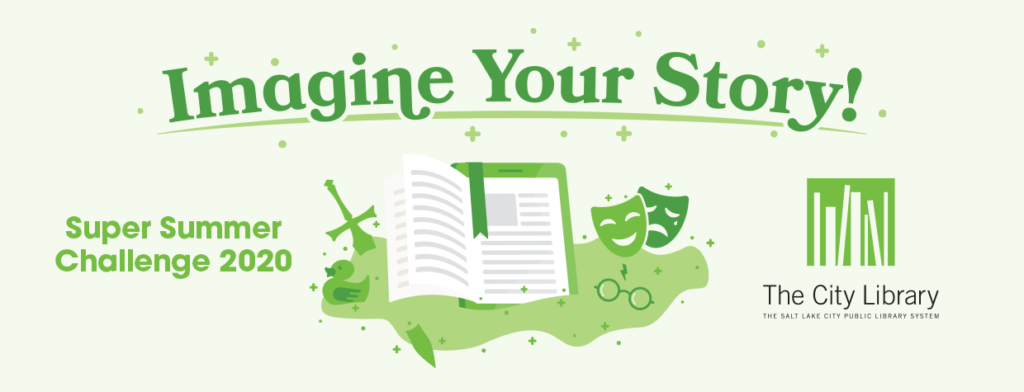
For tracking individual progress during the summer challenge, the library will offer a customized, free, easy-to-use, downloadable app: Beanstack. The library has published a downloaded booklet in PDF format for each level of the program, which also is augmented by details and links at the library’s website. And, for everyone who signs up, they will receive a 20% discount on FanX tickets. As a prize for completing all 36 levels, babies, toddlers, kids, and teens will receive a book while adults can opt either for a book or a coupon to a local bookstore. Prizes will be distributed when the library reopens.
A signature element of SLCPL’s Super Summer Challenge program is that it encompasses activities for readers of all ages to help tone and build up their literacy skills along with printing content and instructions for each age demographic group in Spanish as well as English. This year’s program also has been adjusted to showcase the cosmopolitan breadth and depth of the library’s digital services and creative platforms. These include Pressbooks, a new self-publishing platform in which new items eventually could be curated and added to the library’s electronic collections and HUM, the library’s music streaming service featuring outstanding recordings by Utah-based artists. Just recently, 27 new albums were added to the HUM catalog.

There are three challenge levels in each age group, in which participants will be able to track their achievements on the Beanstack app, best described as unofficially the ninth branch of the SLCPL system. Each level encompasses 12 activities which must be completed in order to qualify for prizes and, at each level, participants must read at least six times. Once participants complete all three levels, they also become eligible for a grand prize. Some activities also are marked with stars to indicate that they can be completed with family members. Various activities, for example, involve watching a library program on the Biblioboard platform, where users can set up their own account.
For Babies and Toddlers, the three levels are, respectively, Rapunzel, Carriage and Royalty. Activities involve listening or reading a book together with an adult. Likewise, the activities for babies and toddlers encourage parents and caregivers, for example, to sign up for the 1,000 Books Before Kindergarten program. Nature walks, outdoor play with water, a dance party and color scavenger hunt are included. Parents can write a fairy story involving a family member or friend as a character, which then can be shared with their child. There are recommendations for simple DIY craft projects as well as setting up a pretend restaurant at home, listening to music in another language or learning sign language for words such as “read.”
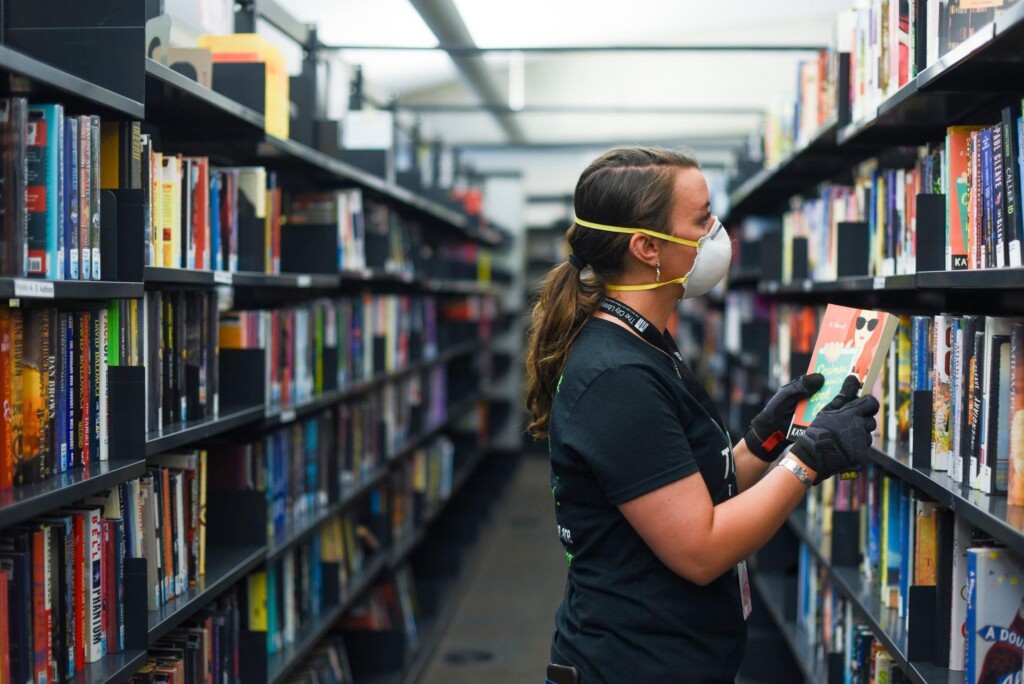
The Kids component’s levels are Sail The Seas, Through The Woods and Dragon’s Egg. Participants can register for the Book Your Summer reading program and become eligible to receive one of the four regional my529 scholarships of $1,000 each. Activities include writing a fairy tale with a family member or friend as well as creating their own superhero story and dressing in costume as a favorite character from fairy tales, mythology or fantasy. Other activities are making dinner for family, arranging a picnic for outdoors (with social distancing measures in mind), making friendship bracelets to share and creating their own miniature fairy garden.
For Teens, the levels are Magic Lamp, Imagine a World and Magic Wand. Participants also can register for the Book Your Summer reading program to have a chance at receiving a $1,000 my529 scholarship. Many of the activities take those of the younger age group to an advanced level where participants can express themselves creatively. These encompass using some of the library’s digital services including Novelist to select a book for reading, checking out the Teen Blog and publishing a short story on the new Pressbooks’ self-publishing platform.

Adult group levels are Star Gazer, Write Your Own and Fairy Queen. Several activities encourage participants to read a book from a genre they have not considered before or reread a book from their childhood. Participants also are encouraged to use other digital library services such as Novelist, FamilySearch, Heritage Quest and Mango Languages or Pronunciator (to learn words and phrases in a different language). Other activities encourage registering to vote either for themselves or friends or family members, reading about Utah women in history and completing a project from an art class on CreativeBug and sharing it on social media platforms by tagging the library. Activities include exploring Ballet West’s virtual library of performances as well as learning a skill via Lynda.com.
The 2019 program drew 10,362 participants, 8% above its previous high and, notably, with 25% growth over two years in the number of adults who registered, compared to the 2017 figures. Last year, more than 3,000 adults participated, representing 29% of the total.
Also last year, the Beanstack app was available for the first time and it drew 636 people. Jacobson says many previous participants have responded positively to the activities in how they integrate learning and playing. The Super Summer Challenge program has become the gateway for many families to discover just how diversified the library’s services are in an age where learning expectations are so immersed in the digital environment but where the classic book form also remains as relevant as ever. Based on a survey of 1,698 patrons, the themes Jacobson and colleagues noticed were “that patrons like to do the challenge as a family, they appreciate the push to stretch themselves, they enjoy the flexibility of a read-only option and they love exploring their community and library.”
PHASED PLAN FOR LIBRARY REOPENING
Bromberg says employees have been working from home or, as needed to handle critical services, have been onsite, while maintaining social distancing protocol. “Some people thought that library employees must be lucky to have a two-month vacation but our staff has been dedicated to rethinking and repurposing programs while developing projects for the future,” he adds.

Many services have been transferred to online platforms. As Salt Lake City remains in the moderate risk (orange) zone, some staff have returned to locations but services remain limited. The locations currently being used are the main City Library, Foothill and Day-Riverside. However, book drops and returns of materials are now available. Some 110,000 items were out for circulation during the quarantine period and Bromberg explains that all hard copy materials are being thoroughly sanitized when they have been returned. Grace periods for returns have been extended.
Volunteers of the Friends of the Library also are allowed to resume operations and patrons can borrow the library’s tangible materials via curbside pickup with the Holds-to-Go option. Bromberg adds the library staff is working with 100 outreach partners in the community, including Volunteers of America along with Neighbors Helping Neighbors to ensure seniors have access to books as well as individuals staying at homeless resource centers, the Christofferson Salt Lake Veterans Home and detox centers.
Fortunately, the plot community garden on the City Library’s north side along 400 South remains active. Bromberg says produce that is being grown will be donated to the Utah Food Bank. Likewise, the library staff has collaborated with colleagues at The University of Utah to offer 3-D printing services for PPE and face shields to accommodate the needs for frontline health care workers.

A critical determinant for gradually reopening the library’s eight branches is the availability of sufficient PPE, disinfectant and sanitizing supplies, as Bromberg has noted. For example, the City Library main branch in downtown SLC encompasses 240,000 square feet of space alone. Therefore, there is no set date, at time of publication, for a full reopening of the library’s system of eight branches.
Once SLC is cleared to be in a low risk (yellow) zone then some locations will be opened gradually with limited services to the public and with face coverings and social distancing measures put in place. One of the most urgent needs in this phase will be providing limited access to public computer services, which Bromberg cites as a priority particularly for the homeless population as well as those who either have no or limited access to digital services. He is working with staff to decide what will be the most prudent logistics to handle such needs while maintaining strict public health and safety measures.
Even prior to its closing in mid-March, the library system already had cancelled all in-person events at least through the summer going into September. Only when the city and state are allowed to go into a normal risk (green) zone will the library begin to phase in slowly the options for in-person events as well as a return to the usual spectrum of in-person library services.
Se arranca el programa estival de lectura (“Super Summer Challenge” todo digital) en la biblioteca pública de la ciudad de Salt Lake el 1 de junio
Quizás son insuperables las bibliotecas como lugares para convivir con la magia que existe, por ejemplo en los cuentos de hadas, la mitología y la fantasía. Pero la magia de la biblioteca va más allá. In The Paris Review, Stuart Kells escribió, las bibliotecas abarcan “la magia del recreo” y “la magia de la serendipia’. Agregó, “la bibliotecas tiene una potencia difícil de explicar el en cálculo árido y burocrático de entradas, salidas y resultados.
En septiembre, poco después del final del último programa estival de lectura, los empleados de la biblioteca empezaron a planear el programa de este año. Eligieron el tema “¡Imagina tu historia!” para capturar en múltiples dimensiones la magia de la biblioteca, reflejada en los planes de actividades y metas no solo para los bebes, los niños pequeños y los adolescentes, sino también para los adultos.
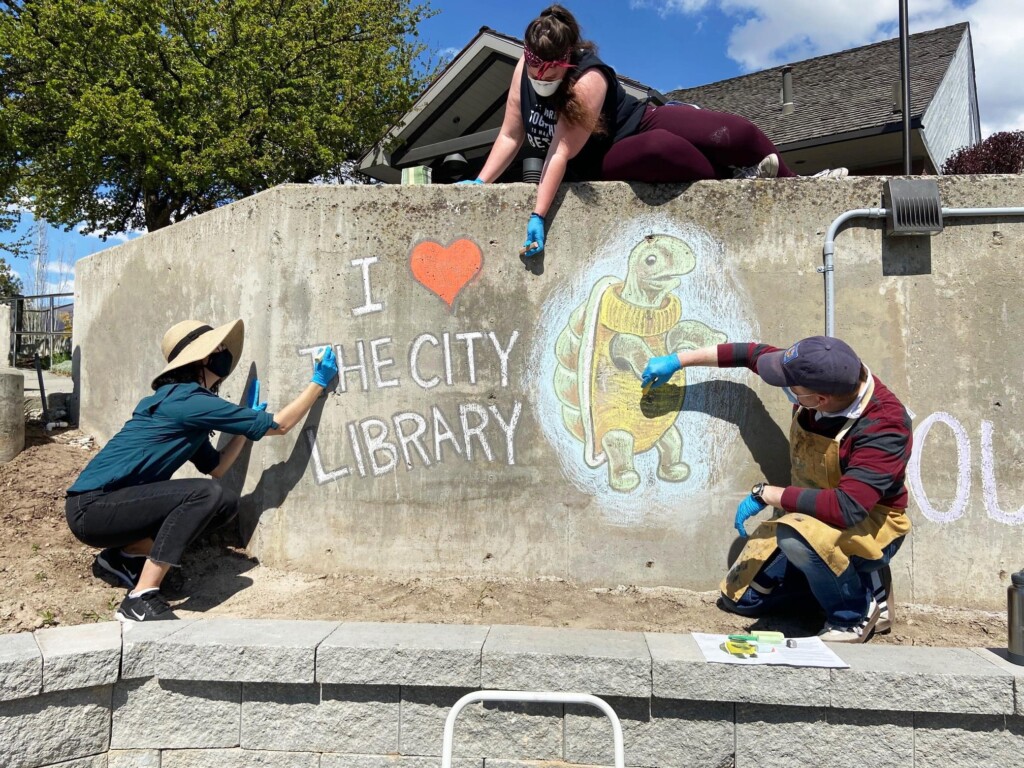
Antes del comienzo de la primavera, ya estaba planeado casi cada aspecto del programa de lectura, incluso los premios y los incentivos conectados con negocios locales de Salt Lake. Sin embargo, cuando se cerró la biblioteca después de la pandemia del coronavirus, los bibliotecarios se trabajaron rápidamente para transferir el programa bibliotecario a una plataforma digital. Realizaron este desafío en poco tiempo para tener todo listo bastante antes de la fecha del arranque. “Estoy muy orgulloso de Liesl Jacobson y todo el equipo por su agilidad y rapidez en asegurando el acceso digital al programa,” dijo Peter Bromberg, el director ejecutivo de la biblioteca.
“Cuando empezamos a planear el programa de este año, ni pensábamos en lo que tendríamos que hacer se no estuviéramos físicamente abierto al público,” dijo Liesl Jacobson el director asistente para la participación comunitaria. “Fue especialmente difícil porque conocemos la dificultad que algunas personas tienen con el acceso digital.”

De hecho, poner a la disposición de todos los recursos para explorar la magia del recreo y de la imaginación digital y a la vez adherir a las recomendaciones del distanciamiento social hace hincapié en la fortaleza de la bibliotecas como instituciones en el siglo veintiuno. Mientras otras instituciones y empresas abiertas al acceso público se han frenado en gran parte, los bibliotecarios han emprendido varios proyectos para profundizar las conexiones digitales con el fin de seguir ofreciendo los servicios de la biblioteca. “Hemos podido mantener el programa estival de lectura tal como lo habíamos planeado,” dice Jacobson. Señala como bendición la fortuna de tener elementos como la biblioteca virtual de Ballet West y las visitas virtuales del arte público.
Para monitorear el progreso individual durante el programa de lectura, la biblioteca ofrecerá una aplicación descargable: Beanstack. La biblioteca ha publicado un folleto descargable en el formato PDF para cada nivel del programa. También tiene detalles y enlaces en el sitio web de la biblioteca. Cada persona que registra recibirá un descuento de veinte por ciento en los boletos de FanX. Como premio por hacer todos los 36 niveles, los bebes, los niños pequeños y los adolescentes recibirán un libro. Los adultos pueden elegir entre un libro y una descuento de una librería local. Se repartirán los premios después de la apertura de la biblioteca.
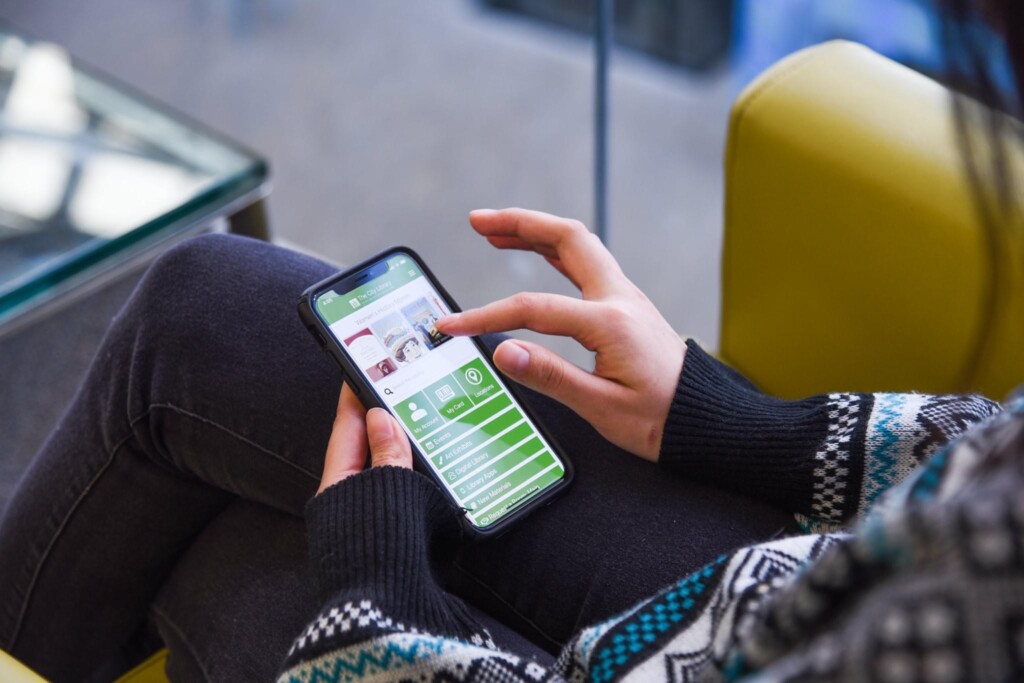
Un elemento fundamental del programa estival es el rango de actividades para personas de todas las edades para construir y fortaleces las habilidades. Hay contenido e instrucciones para cada edad y grupo demográfico disponible en inglés y en español. El programa de este año se ha diseñado para resaltar la variedad y la profundidad cosmopolita de los servicios digitales y las plataformas creativas. Entre ellos, se encuentra “Pressbooks”, una plataforma para la autopublicación. Existe la posibilidad de agregar algunas obras a la colección electrónica de la biblioteca. También se encuentra “HUM,” un servicio de música en línea que incluye algunas grabaciones de artistas de Utah. Hace poco, se agregaron 27 álbumes al catálogo de HUM.
Hay tres niveles para medir el progreso en cada grupo de edad. Se puede monitorear ese progreso individual en Beanstack, descrito de manera no oficial como el sucursal noveno de la biblioteca pública de Salt Lake. Cada nivel abarca 12 actividades que se tienen que hacer para calificar para los premios y en cada nivel, los participantes tienen que leer como mínimo 6 veces. Después de terminar los tres niveles, los participantes califican para el premio grande del programa. Hay actividades señaladas con una estrella para indicar que se pueden hacer con miembros de la familia. Varias actividades, por ejemplo, incluyen viendo a un programa en la plataforma Biblioboard. Los usuarios pueden empezar su propio cuenta.

Para los bebes y niños pequeños, los tres niveles son Rapunzel, Carruaje, y Realeza. Las actividades incluyen escuchando o leyendo un libro juntos con un adulto. Se animan a los padres y los guardianes apuntarse en el programa 1000 libros antes de Kindergarten. Las caminatas en el campo, el juego con agua, una fiesta de baile y el juego de una caza de objetos se incluyen. Los padres pueden escribir un cuento de hadas con un pariente o un amigo como personaje. Se puede compartir con el niño el cuento. Hay recomendaciones para una variedad de proyectos que los niños pueden hacer por propia cuenta. Otras posibilidades incluyen escuchar música en otro idioma y aprender el lenguaje de gestos para palabras como “leer.”
Los niveles para los niños de primaria son Surca los mares, A través del bosque y El huevo del dragón. Los participantes pueden registrarse en el programa de lectura y volverse elegible para una de cuatro becas regionales de my529 que tiene valor de $1000 cada una. Las actividades incluyen escribir un cuento de hadas con un pariente o un amigo, crear una historia de un superhéroe y vestirse como su personaje favorito de un cuento de hadas, mitología o fantasía. Otras actividades incluyen hacer la cena para la familia, arreglar un picnic en el campo (respetando las recomendaciones del distanciamiento social), haciendo brazaletes de amistad para compartir y creando un jardín de hadas de miniatura.
Los niveles para los adolescentes son Una lámpara mágica, Imagina un mundo y La varita mágica. Los participantes pueden registrarse en el programa de lectura y volverse elegible para una beca de my529 que tiene valor de $1000. Muchas de las actividades ayudan a los jóvenes progresar a un nivel más avanzado donde los participantes pueden expresarse de manera creativa. Estos servicios digitales incluyen Novelista para elegir un libro para leer, ver el blog de adolescentes y publicar un cuento en la nueva plataforma de Pressbooks.

Los niveles para los adultos son Ver las estrellas, Escribe por propia cuenta y La reina de hadas. Varias actividades animan a los participantes leer un libro de un genero que no han contemplado o leer de nuevo un libro de su juventud. Los participantes también pueden usar otros servicios digitales como Novelista, FamilySearch, Busqueda de ancestros, Mango idiomas o Pronunciator (para aprender palabras y frases en otro idioma. Otras actividades incluyen registrar para votar (para ellos mismos o para parientes o amigos), leyendo sobre mujeres de Utah en la historia y haciendo un proyecto de una clase de arte en CreativeBug y compartiéndolo en una plataforma de media social usando una etiqueta de la biblioteca. Los participantes también tendrán acceso a la biblioteca virtual de las actuaciones de Ballet West y podrán aprender algo de Lynda.com.
El año pasado participaron 10,362 personas, 8 por ciento más de su máximo anterior y un crecimiento de 25 por ciento en el número de adultos registrados de 2017 a 2019. En 2019, más de 3000 adultos participaron, 29 por ciento de toda la participación.
El año pasado, la aplicación Beanstack se puso disponible por primera vez, y 636 personas aprovecharon de la oportunidad. Jacobson dice que muchos participantes han respondido de manera positiva a las actividades integrando bien el aprendizaje y el entretenimiento. El programa estiva ha servido como la puerta de entrada para muchas familias que descubren la diversidad de los servicios bibliotecarios en una edad en la cual las expectaciones de aprendizaje están tan conectados con el ambiente digital mientras la forma clásica del libro retiene su relevancia. Basándose en una encuesta de 1698 usuarios de la biblioteca, Jacobson y sus colegas notaron algunos temas importantes como “los participantes quieren hacerlo como familia, ellos aprecian el desafío de esforzarse, disfrutan de la flexibilidad de una opción de “solo leer” y les gustan explorar su comunidad y la biblioteca.
El plan de reapertura
Bromberg dice que los empleados han estado trabajando de casas o cuando se necesita para llevar a cabo los servicios esenciales en la biblioteca siempre conforme con los protocolos del distanciamiento social. “Algunas personas pensaron que los empleados iban a tener la suerte de vacaciones durante dos meses, pero nuestra plantilla se ha dedicado a repensar y reorientar los programas mientras también desarrollan proyectos para el futuro.”
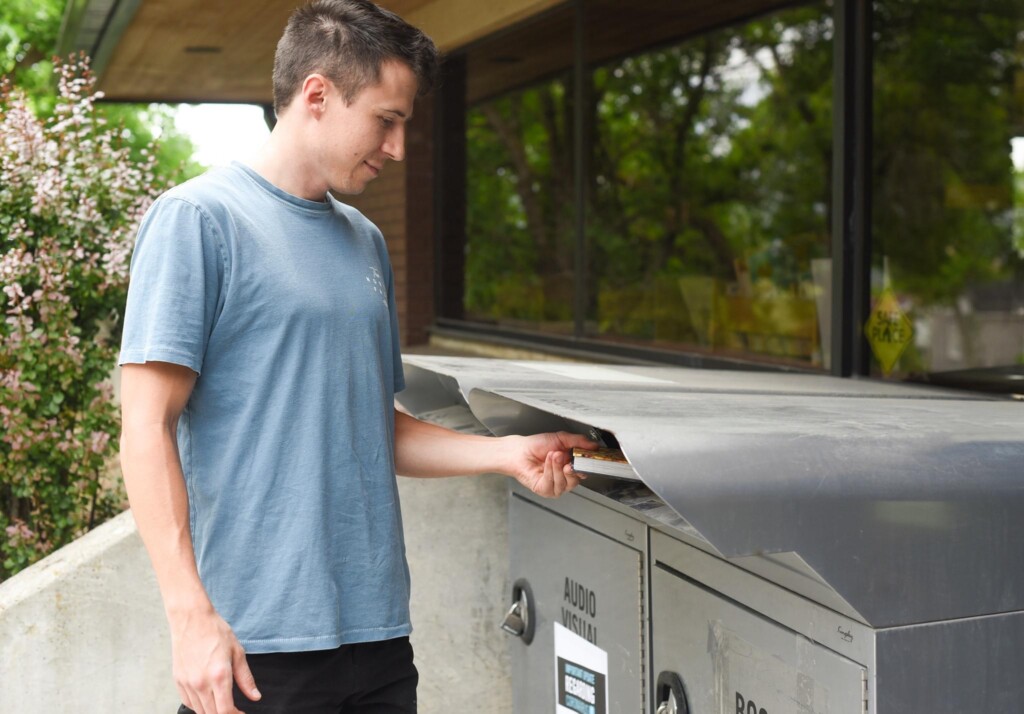
Muchos servicios se han transformado para el uso en las plataformas en línea. Como Salt Lake se mantiene en una zona de riesgo moderado, algunos bibliotecarios han regresado a los sucursales, pero los servicios siguen limitados. Los sitios en uso son la biblioteca central, Anderson-Foothill y Day-Riverside. Los lugares para depositar libros y devolver otros materiales están disponibles ahora. Aproximadamente 110,000 materiales estaban en circulación durante el periodo de cuarentena y Bromberg señala que están siendo limpiado de una manera rigurosa cuando la biblioteca los recibe en devolución. Las fechas de devolución han sido extendidas durante este tiempo.
Los voluntarios de Amigos de la Biblioteca pueden hacer de nuevo sus operaciones y los usuarios de la biblioteca pueden sacar materiales con las reservaciones para llevar (de momento, hay que hacer todo por fuera de las bibliotecas “curbside pickup”). Los bibliotecarios están trabajando con 100 socios en la comunidad, incluyendo Voluntarios de América, Los vecinos ayudando a otros vecinos, etc. Esto ha ayudado con proveer acceso a las personas de tercera edad y también a las personas sin techo.
Afortunadamente, se mantiene activo el jardín comunitario que se encuentra en el lado norte de la biblioteca central al lado de 400 sur (“400 South”). Lo que se cultiva allí se donaré al banco de comida de Utah. Los bibliotecarios han colaborado con otros para producir mascaras y otro equipo que puede ayudar a los que trabajan en el sistema de salud protegerse.

Un determinante fundamental para la reapertura de la biblioteca es la disponibilidad de mascaras, desinfectante, y otras materiales para mantener limpio y seguro las instalaciones de la biblioteca. Es un desafío grande. Bromberg nota que el espacio de la biblioteca central mide 240,000 pies cuadrados. En este momento, no hay una fecha específica para la reapertura de todo el sistema de las biblioteca.
Cuando Salt Lake se etiquete como zona de bajo riesgo, algunos sitios de la biblioteca se abrirán poco a poco con servicios limitados al público, con medidas de distanciamiento social como parte del protocolo. Una de las necesidades importantes será el acceso a los servicios de las computadoras públicas, que Bromberg señala como prioridad. Bromberg está trabajando con los bibliotecarios para decidir la logística más eficaz y prudente para alcanzar las metas y respetar las exigencias del salud pública y de la seguridad.
Antes del cierre de la biblioteca a mediados de marzo, el sistema ya había cancelado todos los eventos en persona hasta septiembre. Solo cuando Salt Lake entre en la zona verde de riesgo normal, la biblioteca reiniciará la programación de eventos en persona y el retorno del espectro usual de servicios bibliotecarios en persona.

